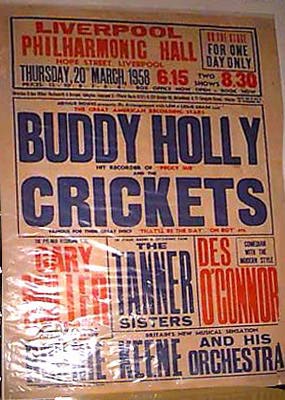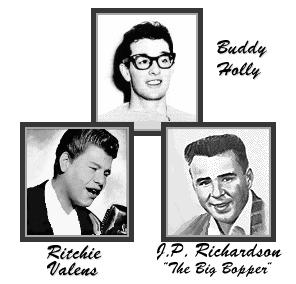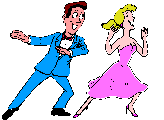|
Considered one of the founding fathers of rock 'n roll, Buddy Holly demonstrated his love for music early in life. As a
child, Holly learned to play the violin and the piano. However, he soon discovered a preference for the guitar. Holly's parents,
Laurence and Ella Holley, continuously supported the young artist in his musical ventures. By age 13, Holly and his friend
Bob Montgomery were playing a kind of music they called "Western Bop," as well as mainstream country songs which they performed
at local clubs.

Holly was the group's guitarist and vocalist. Much of the band's music was produced by Norman Petty's studios in Clovis,
New Mexico. Among the songs they recorded was a lively version of "That'll Be the Day," which caught Decca's attention once
again. From that moment on, the group's songs were released on Decca's subsidiary, the Brunswick label.

The group's music talent, together with Holly's unique "excited" style of singing, quickly made them a success. Songs
such as "Maybe Baby," "Oh Boy!" and Holly's solo hit "Peggy Sue" became extremely popular, especially among teenagers.


Death Certificate of Buddy Holly
http://www.fiftiesweb.com/coroner.htm
|
 |
|
|
|
 |
|
In 1959, as part of a rock show, Holly toured with Ritchie Valens and "The Big Bopper," J.P. Richardson. They began the
tour riding from performance to performance in buses, which kept breaking down. One day, after a concert at the Surf Ballroom
in Clear Lake, Iowa, Holly chartered a small plane to get the musicians to the next town. He had hoped to get them there with
extra time to rest. On the morning of February 3rd, the plane carrying Holly, Valens and Richardson took off from Mason City,
Iowa. Sadly, the plane crashed after traveling eight miles, and everyone on board was killed.
Despite a rather short career on the charts, Holly's innovative style, as well as his enthusiastic and energetic performances,
made him one of the most popular singers in music history

|
 |
|
|
|

